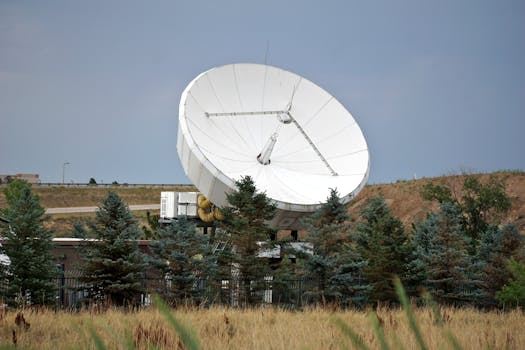
Beyond Earth: How Recent Advances Are Shaping Satellite Telecommunications
Beyond Earth: How Recent Advances Are Shaping Satellite Telecommunications, the field of satellite telecommunications has undergone significant transformations in recent years, driven by advances in technology, increasing demand for global connectivity, and the need for more efficient and secure communication systems. At the forefront of this evolution are innovations such as high-throughput satellites, satellite constellations, and the integration of satellite communications with terrestrial networks.
One of the key drivers of these advances is the growing requirement for global connectivity. As the world becomes increasingly interconnected, the need for reliable, high-speed communication systems that can reach remote and underserved areas has never been more pressing. Satellite telecommunications offer a solution to this challenge, providing coverage to areas where traditional terrestrial infrastructure is lacking or non-existent.
The Role of High-Throughput Satellites
High-throughput satellites (HTS) have revolutionized the satellite telecommunications industry by offering significantly higher capacities and faster data speeds compared to traditional satellites. These satellites use a combination of advanced technologies, including spot beams and frequency reuse, to achieve higher throughput and better spectral efficiency. This enables the support of a wide range of applications, from broadband internet access to mobile backhaul and enterprise networks.
The deployment of HTS has been instrumental in bridging the digital divide, especially in rural and remote areas where access to traditional broadband services is limited. By providing high-speed internet connectivity, HTS enable communities to access essential services such as education, healthcare, and financial services, thereby improving their socio-economic well-being.
Satellite Constellations: The New Frontier
Satellite constellations, comprising hundreds or even thousands of small satellites operating in low Earth orbit (LEO), are the latest innovation in satellite telecommunications. These constellations are designed to provide global coverage, offering low-latency, high-speed connectivity to any point on the Earth. Companies like SpaceX, Amazon’s Kuiper Systems, and OneWeb are at the forefront of this development, with plans to launch extensive satellite networks in the coming years.
The potential of satellite constellations is vast, ranging from providing broadband internet services to enabling IoT (Internet of Things) applications, maritime and aviation communications, and even supporting 5G and future 6G networks. The low latency and global coverage offered by these constellations make them an attractive option for applications requiring real-time communication, such as telemedicine, online education, and financial transactions.
Integration with Terrestrial Networks
The integration of satellite communications with terrestrial networks is another significant area of advancement. This integration enables the creation of hybrid networks that combine the strengths of both satellite and terrestrial technologies, offering seamless, ubiquitous connectivity. By leveraging satellite’s wide area coverage and terrestrial networks’ high capacity, hybrid networks can provide reliable, high-speed connections even in areas with limited infrastructure.
The integration also facilitates the development of 5G and future wireless networks, where satellite can play a crucial role in extending coverage, enhancing capacity, and ensuring network reliability. Additionally, the use of satellite in backhauling traffic from cell towers to core networks can help reduce the cost and complexity of deploying and maintaining terrestrial infrastructure.
In conclusion, recent advances in satellite telecommunications are poised to revolutionize the way we communicate beyond Earth. With the advent of high-throughput satellites, satellite constellations, and the integration with terrestrial networks, the future of satellite telecommunications looks promising. As technology continues to evolve, we can expect even more innovative solutions to emerge, further bridging the digital divide and connecting the unconnected.
